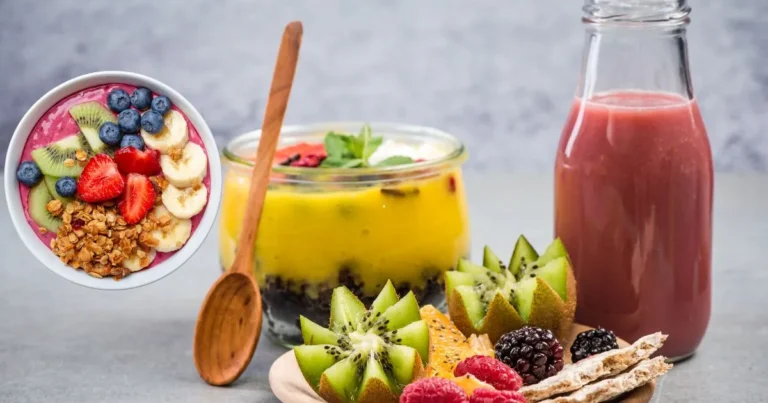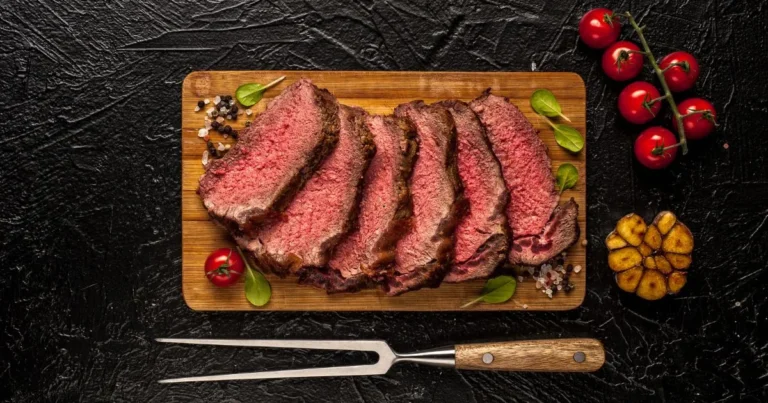Discover the Power of Traditional Asian Breakfast Foods for Energy and Balance
Table of Contents
You’ve likely heard it before — breakfast is the most important meal of the day. But what if your usual toast or sugary cereal isn’t giving you the steady energy and balance your body actually needs? Around the world, especially across Asia, breakfast is more than just a meal. It’s a ritual rooted in centuries of tradition, one that fuels your body and centers your mind.
If you’re ready to move beyond empty carbs and explore meals that nourish deeply, traditional Asian breakfast foods might be exactly what you’ve been missing.
Why Traditional Asian Breakfast Foods Deserve a Spot on Your Morning Table
Warm, Balanced, and Energizing
Your body craves warmth and nutrition first thing in the morning. Many traditional Asian breakfasts focus on comfort and ease of digestion — warm broths, fermented vegetables, and protein-rich staples. Unlike cold cereals or pastries loaded with sugar, these meals leave you feeling full and focused without the crash.
Designed for Long-Lasting Energy
You’ll notice a clear pattern in Asian breakfasts: a harmony of carbs, protein, healthy fats, and fiber. These combinations support sustained energy levels and gut health, thanks to the inclusion of cooked vegetables, legumes, and often fermented ingredients.
Rooted in Cultural Wisdom
Across Asian countries, breakfast is crafted with care. In China, a rice porridge called congee is often eaten to soothe the stomach. In Japan, miso soup cleanses and replenishes. In India, idlis and sambar support digestion and provide lasting fullness. These aren’t just meals — they’re expressions of wellness philosophies passed down through generations.
Explore 10 Traditional Asian Breakfast Foods That Energize and Nourish
Below, you’ll find ten deeply satisfying options, each bringing something unique to your table. Whether you’re looking for plant-based choices, high-protein meals, or gluten-free alternatives, there’s something here to inspire your mornings.
1. Congee (China)
A comforting rice porridge that warms your belly and resets your system.
You can eat it plain when you’re feeling under the weather or dress it up with savory toppings like century egg, shredded chicken, or scallions. It’s light, digestible, and incredibly versatile.
Basic Congee Recipe
| Ingredient | Amount |
|---|---|
| White rice | 1/2 cup |
| Water or broth | 5 cups |
| Salt | To taste |
| Optional toppings | Chicken, scallions, soy sauce, ginger |
2. Miso Soup with Rice (Japan)
If you want a light, restorative meal, miso soup with a side of rice hits the mark.
Miso is fermented soybean paste — rich in probiotics, minerals, and umami flavor. Pair it with rice and a boiled egg or tofu for a complete breakfast that supports gut health and mental clarity.
3. Gyeran Mari with Rice (Korea)
This rolled egg omelet is loaded with finely chopped veggies and sometimes a bit of cheese or ham. It’s sliced into rounds and paired with warm rice and kimchi.
The combination gives you protein, fiber, and probiotics — all in one beautiful, colorful plate.
4. Idli and Sambar (India)
Idlis are steamed rice and lentil cakes that feel incredibly light but keep you satisfied. They’re paired with sambar — a spicy lentil soup brimming with vegetables and spices.
This South Indian breakfast is naturally vegan, gluten-free, and probiotic-rich due to the fermentation process.
Simple Idli-Sambar Ingredient Table
| Ingredient | Quantity |
|---|---|
| Idli batter (fermented rice + lentils) | As needed |
| Sambar dal (toor dal) | 1 cup |
| Mixed vegetables | 1 cup |
| Tamarind, mustard seeds, curry leaves | For seasoning |
5. Pho (Vietnam)
Traditionally eaten in the morning in Vietnam, pho is a deeply aromatic beef or chicken noodle soup. It combines rice noodles, herbs, and a clear, spiced broth.
This breakfast not only hydrates you but also boosts circulation thanks to ingredients like star anise, cloves, and ginger.
6. Roti Canai with Dhal (Malaysia)
You’ll love the contrast of flaky, crispy flatbread dipped into a gently spiced lentil curry.
High in protein and fiber, this breakfast keeps your blood sugar steady. For added benefits, pair it with a cup of pulled tea (teh tarik) or black coffee.
7. Khao Tom (Thailand)
Thailand’s take on rice soup is lighter than Chinese congee and often includes pork meatballs, ginger, garlic, and cilantro.
It’s warm, clean, and refreshing — perfect for sensitive stomachs or rainy mornings.
8. Paratha with Yogurt (India/Pakistan)
If you’re after something hearty, try whole-wheat parathas — a type of pan-fried flatbread that can be stuffed with potatoes, spinach, or paneer.
Pair with plain yogurt and a side of pickle for a rich, grounding meal that offers both carbs and probiotics.
9. Nasi Lemak (Malaysia)
This iconic Malaysian dish is made with coconut rice and served with boiled eggs, spicy sambal, crispy anchovies, and roasted peanuts.
Although rich, it’s incredibly balanced — you’re getting protein, good fats, and energy-dense rice all on one plate.
10. Soy Milk and Youtiao (China)
This combo is a favorite in northern China — slightly sweet soy milk paired with a crispy dough stick (youtiao).
Think of it as a light, balanced breakfast that gives you enough carbs to kickstart your day without feeling weighed down.
Why Asian Breakfasts Outperform the Standard Western Plate
Western breakfasts often revolve around sugar, dairy, and caffeine. While convenient, they’re usually lacking in fiber, digestion-friendly spices, or warm, cooked components.
What Asian Breakfasts Offer Instead:
- Long-acting carbohydrates: Rice and lentils sustain energy better than processed bread.
- Fermented foods: Miso, kimchi, yogurt, and pickles improve gut flora.
- Natural flavors: Herbs and spices enhance meals without extra sugar or fat.
- Warm meals: Easier on your digestion and metabolism first thing in the morning.
Make Traditional Asian Breakfast at Home: A Quick Start Guide
You don’t need to live in Asia or have a pantry full of exotic ingredients to enjoy these meals. Start small and build your comfort level over time.
Pantry Essentials:
- Rice (jasmine, sticky, basmati)
- Miso paste
- Soy sauce, fish sauce
- Lentils (toor dal, red lentils)
- Scallions, ginger, garlic
- Eggs or tofu
- Sesame oil, mustard seeds
3 Quick Recipes to Try This Week
1. Overnight Congee
- Add rice and broth to a slow cooker at night.
- Wake up to a warm, ready-to-eat breakfast.
2. Instant Miso Soup
- Dissolve miso paste in hot water, add tofu cubes and wakame seaweed.
- Serve with a boiled egg and rice.
3. 5-Minute Egg Rolls (Gyeran Mari)
- Beat eggs with chopped veggies.
- Fry in a pan, roll, slice, and serve with kimchi.
Frequently Asked Questions About Asian Breakfast Foods
What are Asian breakfast foods typically made of?
They often use rice, broth, fermented items, vegetables, and legumes — designed for balance and steady energy.
Are Asian breakfasts healthier than Western ones?
Many traditional dishes avoid processed sugars and instead offer fiber, protein, and gut-friendly components that support your health long-term.
Can I make Asian breakfasts with basic ingredients?
Yes. Many meals use simple staples like rice, eggs, miso, or tofu. You can gradually add specialty ingredients as you explore.
Do Asian breakfasts work for weight loss or fitness goals?
Absolutely. Their emphasis on satiety, low-glycemic carbs, and balanced macronutrients makes them great for metabolic health.
Are there plant-based Asian breakfast options?
Definitely. Idli with sambar, miso soup with tofu, congee with veggies, and paratha with chutney are all excellent vegan-friendly meals.
Conclusion: A Better Morning Begins with the Right Breakfast
When you choose Asian breakfast foods, you’re choosing more than just variety — you’re selecting meals that fuel, restore, and prepare you for the day ahead. These traditional dishes aren’t fast fads; they’re time-honored approaches to nourishment that meet your body’s needs from the inside out.
You don’t need to adopt every dish at once. Start with one or two that excite you. Test how they make you feel. Chances are, you’ll notice a shift — not just in your energy, but in your mindset.
Call to Action
Ready to change the way you start your day?
Pick one traditional Asian breakfast to try this week and share your experience with friends or on social media.
Your mornings are about to get a whole lot more flavorful — and balanced








